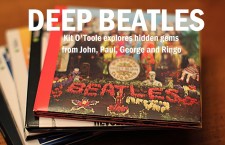The last recordings of an early rock legend had none of the crunchy grit of “Dizzy Miss Lizzy.” Instead, Larry Williams reimagined his sound (and with “Bony Moronie,” one of his most famous songs) into something best described as an ass-shaking 1970s funk bomb.
The New Orleans-born Williams, who would be dead of a gunshot wound by 1980, had already made a sweeping impact on popular culture, first as the originator of some of the 1950s’ most distinctive hits and then as an inspirational well spring for next-gen stars like the Beatles (who did “Slow Down,” “Bad Boy” and “Lizzy” over the years) and the Rolling Stones (“She Said Yeah,” which opened 1965’s December’s Children). That sparked a late-’60s resurgence which saw Williams hit on a collaboration with Junior “Guitar” Watson (1967’s Two for the Price of One) and with David Lindley’s band Kaleidoscope (“Nobody,” a classic psychedelic-soul single).
Williams continues along those lines here, only he lards on ever greasier grooves throughout That Larry Williams — shaking and quaking with all the power, style and attitude of a pimp hat-wearing blaxploitation-film villain. Joined by Maceo Parker and Fred Wesley from the James Brown band, along with Watson keyboardist Rudy Copeland, Williams establishes from the first — when he turns his classic Little Richard-rip “Bony Maronie” into a boiling gumbo pot of R&B — that this will be something utterly, completely different.
“One Thing or the Other” and “ATS Express” confirm that he’d been checking out Sly and the Family Stone in the interim. A smile must have curled up Bootsy Collins face, too, when he heard “The Resurrection of Funk,” with its Funkadelic-esque shout outs.
Williams seems to briefly reference his mid-century sound on the sexy ballad “How Can I Believe,” before make an up-to-the-moment addition of some Barry White-style monologuing. Only “Funky Force (Is With You),” a Star Wars-themed trip to the outer limits, feels dated — betrayed as it is by a now-dated narrative — but even then, there is the pleasant distraction of a broiling, indescribably addictive brass line. Finally, Williams offers the titanic “Can’t Dance to the Music,” which provides its own remedy for such issues.
What Larry Williams, who was turning out to be quite the musical chameleon, might have done into the 1980s is anybody’s guess.
- How Deep Cuts on ‘Music From Big Pink’ Underscore the Band’s Triumph - July 31, 2023
- How ‘Islands’ Signaled the Sad End of the Band’s Five-Man Edition - March 15, 2022
- The Band’s ‘Christmas Must Be Tonight’ Remains an Unjustly Overlooked Holiday Classic - December 25, 2016




